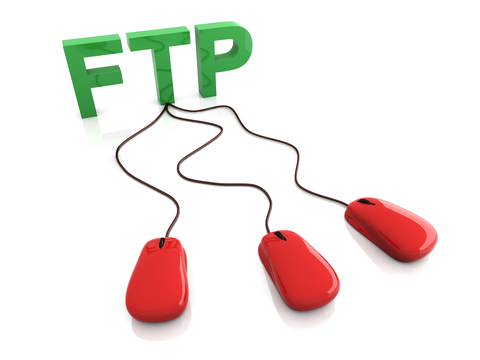A Top-Down Look at FTP Servers
FTP stands for File Transfer Protocol and is one of the more popular ways to transfer large amounts of data fr om computer to computer. The protocol allows for a variety of different security options, making it less likely that you will experience a loss of information or a breach by hackers. Setting up a server built on FTP can involve a little bit of work, but many businesses benefit from the ease of use and rapid information transfer that such a server offers.

What is the Value of an FTP Server?
An FTP server is not for everybody, but it is a great tool that more and more companies can make use of. People who will get the most use out of an FTP server are the ones who have a lot of files that regularly get passed through their company from day to day. For example, anybody who deals in public relations or photography likely has a large store of files coming in every day that need to be moved and edited by different users. Most servers have a lim it on the number of file transfers that can occur at one time or the size that each file can be at. FTP sidesteps these limits, allowing much larger and many more transfers. Whether you want to move files, media, or software, this is a way to do it quickly.
FTP versus Cloud
Some people feel that cloud technology makes FTP somewhat outdated. Cloud allows for better access to remote files and is generally more secure. However, FTP servers have the ability to access the full contents of any computer on the network, not just what has been uploaded onto the cloud. Data transfers are generally easier with FTP as well. Cloud tends to be more expensive at least in the short-term, which causes many companies to prefer FTP. When weighing these options, it is worth noting that you can get the best of both worlds by combining cloud and FTP. However, many businesses prefer to keep everything on one system, thus choosing one or the other based on their needs.
Traceability Issues
One of the potential flaws of FTP is the issue of traceability. FTP has no mechanism in place to tell you who opened a particular file on the server and when. If your employees each have their own pool of work that they do independent of others, you don’t need to worry about this problem. However, if you choose to use the server for collaborative projects, you will need something in place to make sure multiple employees are accessing the right files and aren’t overwriting work that somebody else has done. Signing the files with a simply signature line in the document’s header or footer is a good way of managing this. A simple listing such as who accessed the file and at what date and time is all you need.
Security
Using the base framework for an FTP server means exposing yourself to potential security leaks. FTP functions by opening up multiple ports, which means that a lot of activity on the server gives hackers a lot of easy access to your files. There are, however, many security options to help protect against unwanted intrusion. For example, explicit FTPS is a protocol that allows clients to request that certain sessions be encrypted. This means that the normally unsecured open ports in an FTP server can now be set to deny permission for certain connections. You can also layer an FTP transfer over a secure shell, or SSH, session. This combines the strengths of both FTP and SSH in one package.
Training
One of the biggest benefits that an FTP server has is that it is very easy to train employees on the language used. FTP uses only a handful of commands that most people will need on a daily basis, so it’s just a matter of teaching your employees what those commands are and what they do. However, you need to make sure that your employees know more than just how to work the server – they need to know the flaws mentioned above and their respective workarounds. Any training sessions should emphasize the need to date files appropriately and to be careful with security. Once you have this in your employees’ heads, the rest becomes easy.
If you are dealing with large files on a regular basis, an FTP server might be a good way to go. Keep the advice above in mind and you will be able to maximize the potential of this technology while minimizing its drawbacks.